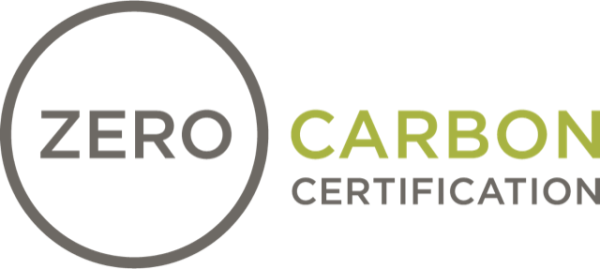All renewable energy used for a Zero Carbon project must be produced either directly on-site or procured from a dedicated, new off-site installation. On-site installations are those within the project area, whereas off-site installations are those which are outside this project boundary. All renewable energy systems must be:
- Additional;
- Attributed to the project;
- Educational;
- Identifiable; and
- Metered.
The following paragraphs provide detailed guidance regarding these attributes along with additional clarifications.
Additionality
Renewable energy assemblies and infrastructure must provide additionality, i.e., create new renewable energy capacity that would not otherwise exist but for the actions of and investments attributed to the project. While creating local or regional installations is recommended, additional renewable energy systems need not be located within the same regional grid.
Claimed renewable energy systems cannot pre-date the project unless it can be demonstrated that:
- Systems were pre-planned for utilization and attribution to additional buildings; and
- Attribution to the project does not displace the utilization or attribution of those resources by another project. Existing buildings may count renewables that were already serving the project as long as attribution to the project doesn’t displace existing claims for any shared renewables.
Allowed Sources
Renewable energy is defined as photovoltaics, solar thermal, wind turbines, water-powered microturbines, direct geothermal, or fuel cells powered by hydrogen generated from renewably powered electrolysis. Project teams proposing to use a renewable energy technology other than what is indicated here must submit a Request for Ruling for preapproval. It is not acceptable to measure a project’s performance by including the savings from another building that is outside the project boundary or the scope of the certification without a relevant Exception.
Attribution
Renewables for the project must be shown to be solely attributed to the project (not double-counted), through ownership or contractual agreement, for a period of at least 15 years from the date of construction completion. Payment for the renewable energy claimed, if not provided from the owner, must be made on behalf of the project.
Renewable Energy Certificates (RECs) generated from the claimed systems:
- Must be retained or retired by the project, or on its behalf.
- Cannot be sold or transferred for the purpose of being claimed by another entity (except in the unique situations outlined in Exceptions EC-007 and EC-008.
- Cannot be purchased to satisfy the energy reduction requirements of Zero Carbon.
It is not required that procured renewable energy have a direct electrical connection to the project; however, contractual attribution must be demonstrated.
Educational
The generation of renewable energy systems must be highlighted and explained at the project site. Educational strategies may include signage, informational displays, building automation system (BAS) dashboards, or virtual tours of the systems.
Identifiable
All renewable energy systems must be physically identifiable, meaning they must be a contiguous installation with a known location and attributes, rather than a generalized power purchase.
Metered
On-site renewable energy systems must be directly metered to record current energy output in real-time and over the year. Directly owned on-site renewables must operate during the entire performance period.
Project teams must show that the renewable energy output quantity from off-site installations, when allowed, is either contractually guaranteed by the provider or directly metered. The procured quantity of renewable energy may vary in actual term length so long as the total procurement is equivalent to 15 years of the project’s energy use during the performance period; i.e., a project may arrange a 15-year contract with an annual volume equal to the energy demand of the project or a contract for renewables equal to 15 times its annual energy use for a one-year period, or another equivalent combination.
Renewable Energy Ownership
When third-party ownership of renewable energy systems is allowed, it must feed the project directly and have a contract for 15 years minimum. In these instances, acceptable forms of renewable energy ownership include:
- Direct ownership
- Indirect ownership
- Community Solar;
- Renewable Energy Investment Fund; or
- Power Purchase Agreement (PPA or vPPA)
- Other forms approved by the ILFI through a Request for Ruling which are consistent with the intent of the certification.
Note that the sole purchasing of unbundled renewable energy certificates (RECs) is not an acceptable form of procurement.
Regulatory Barriers
If project teams face regulatory barriers, such as net-metering limitations, they may be eligible to pursue a relevant Exception.



